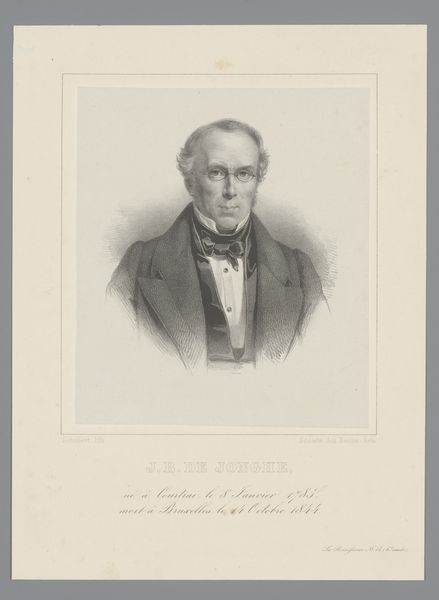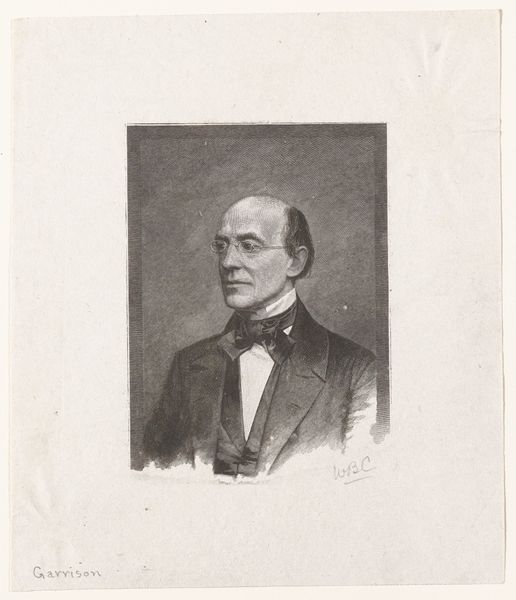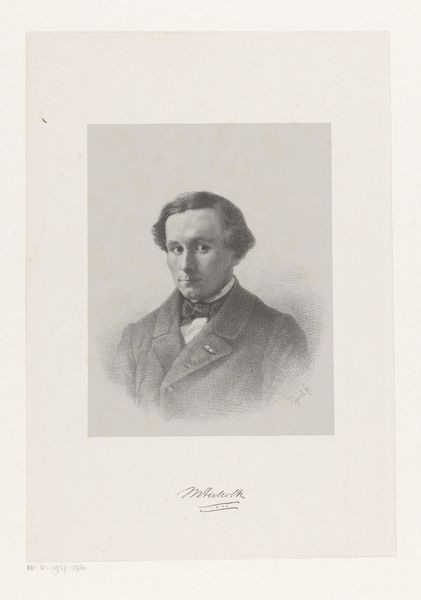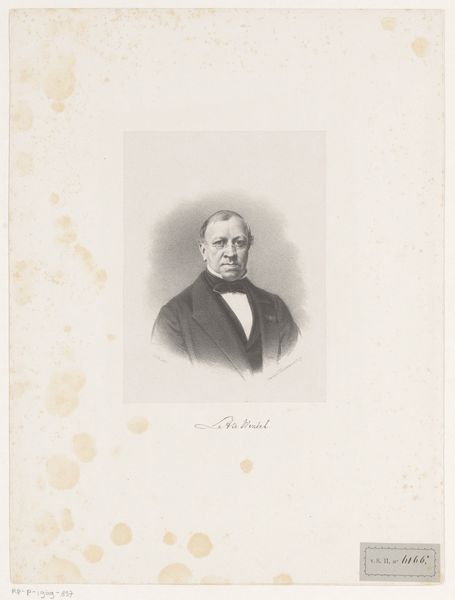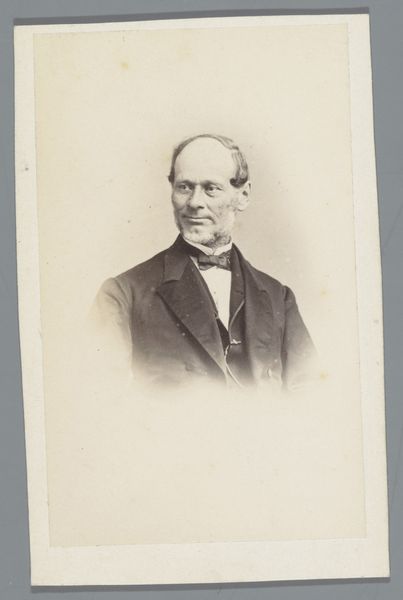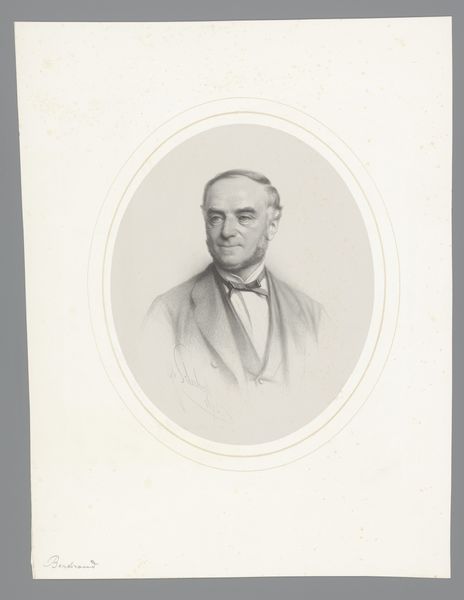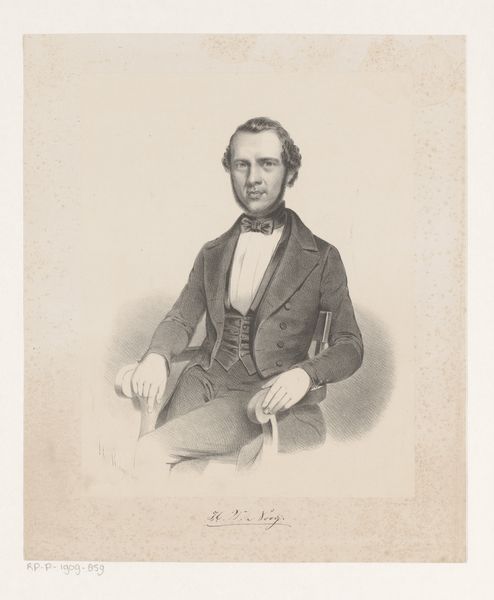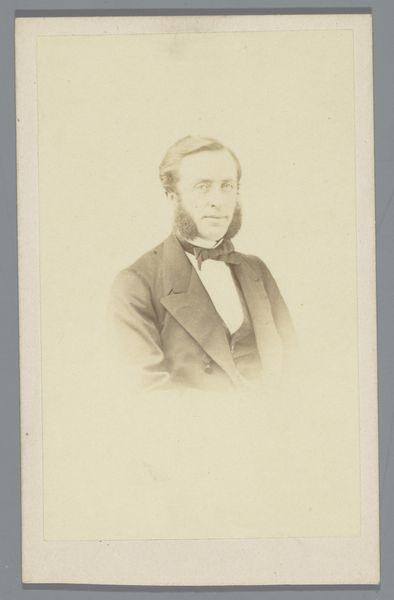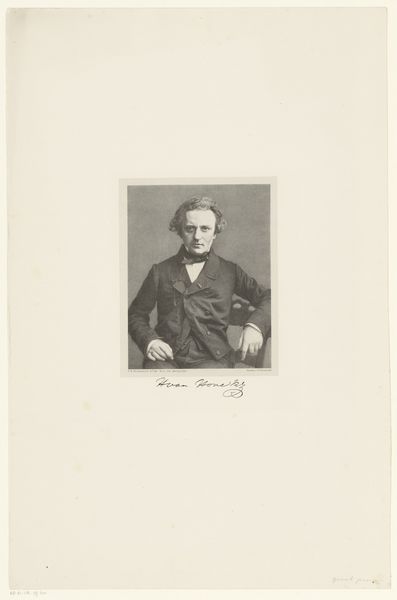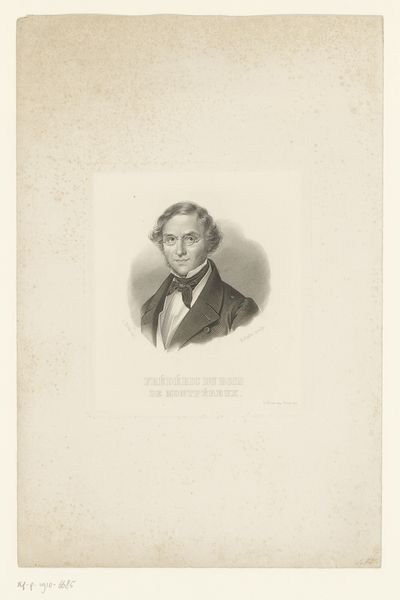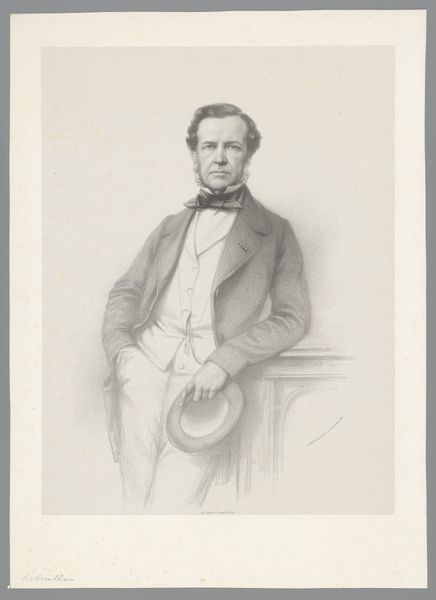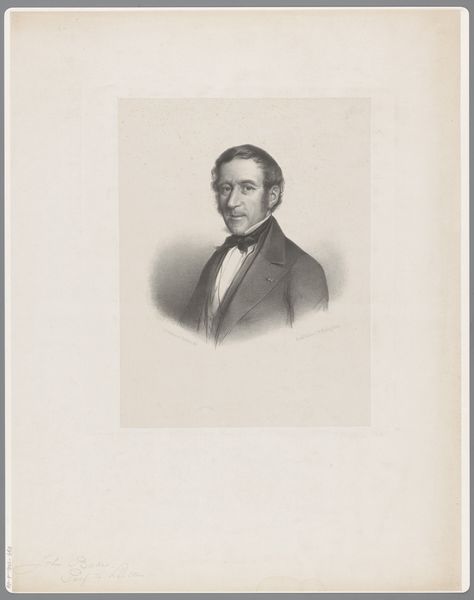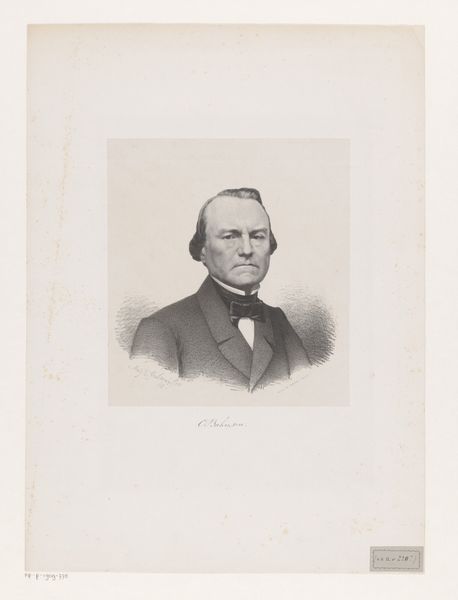
#
portrait
#
16_19th-century
# print
#
realism
Dimensions: height 526 mm, width 404 mm
Copyright: Rijks Museum: Open Domain
Editor: So, here we have Joseph Schubert’s "Portret van mijnheer Lejeune" from 1872, a print at the Rijksmuseum. There's an understated elegance to it. What strikes me is how photorealistic the detailing of Mr. Lejeune’s coat is; it practically invites you to touch it! What stands out to you in this work? Curator: I immediately think of the labor and the social context implied in the production of this print. Consider the means of reproduction in 1872. This print democratizes the portrait, making it accessible to a broader audience than a painted portrait ever could. Who was Mr. Lejeune? His ability to commission, or receive as a gift, even a print speaks volumes about his place in the burgeoning 19th-century middle class. Editor: That’s fascinating, I hadn’t considered that the choice of print material has as much to say as the portraiture. How do you mean exactly by democratising access? Curator: The material dictates its accessibility, right? The lower cost of producing and distributing prints made portraiture available beyond the elite circles who traditionally commissioned paintings. This challenges the art historical narratives centered on unique "masterpieces" and emphasizes instead the value in mass production and distribution. Think of the paper, the ink, the press – all industrial products, commodities of their time reflecting the changing social fabric. What does realism mean when its replicated en masse? Editor: I guess it challenges the idea of the ‘unique’ artwork and focuses on accessibility and, as you mentioned, its place in the social world, not just its aesthetic value. Curator: Exactly. This print invites us to reconsider not only what is depicted, but how that depiction came into being, and what social realities are embedded in that process. Hopefully it’ll help us think about these questions the next time we approach portraiture too! Editor: I really learned a lot about looking beyond just the face of the sitter. It makes me rethink what "realism" really meant then. Thanks!
Comments
No comments
Be the first to comment and join the conversation on the ultimate creative platform.
